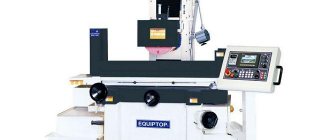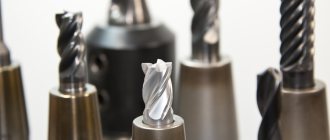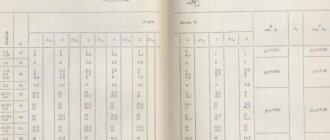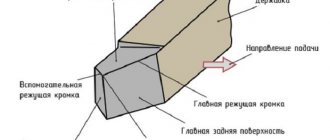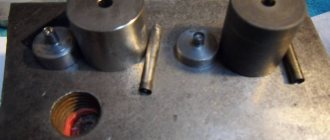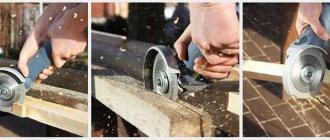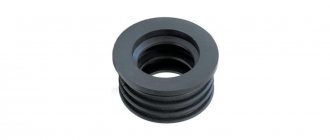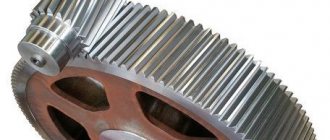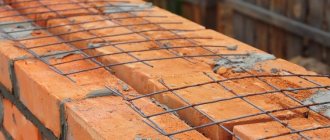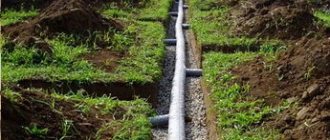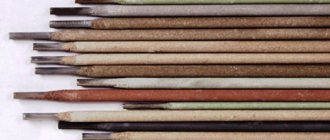Specifications.
During lapping, a fine-grained abrasive powder is applied in order to remove a thin layer of metal from the part being processed. This can be emery, electrocorundum, diamond dust. To ensure that the materials are held in place, they are lubricated with kerosene or turpentine during operation. It is combined with a special liquid - lubricant or paste (aluminum or chromium oxide, crocus, Vienna lime).
This action is performed by laps, which are made from different materials: gray cast iron, small grade steel, bronze, copper, lead, wood and other materials. The main thing is that they are hard enough. For example, if particularly precise finishing is required, you will have to grind it with glass, while steel ones are intended for thin and long parts. The most common lapping plates are made of cast iron, with a hardness of HB 190-230. An allowance of approximately 0.005-0.02 mm is left for lapping.
There are tools for finishing and roughing operations. In the design of the lapping for the roughing operation, in contrast to the finishing operation, there are holes where the paste is poured, and a separate one for waste after processing. The shapes of this part can be very diverse: shaft, disk, plate, ring. For flat parts a flat lap is used, for cylindrical parts a round lap is used. There are vertical and horizontal lapping machines. The first ones are used for processing external surfaces, the second ones - for external and internal surfaces.
If it is necessary to process a hole, special laps are used. They look like a sleeve that is put on the shipment.
It is worth noting that finishing tools come with laps that are adjustable and non-adjustable. In the first case, there is a split jacket, an internal cone and a sliding device, due to which, when the cone moves, the tool increases in diameter.
Such machines allow you to process a variety of external, internal and flat surfaces, as well as crankshaft journals, camshaft cams, ring gears, gears, etc. Advice. The fact that lapping machines help a mechanic’s work in many ways does not mean that you can use them without skills. These tools have their own characteristics. It is necessary to undergo training and practice in order to operate it for its intended purpose.
These machines come in universal and special purpose types. For example, the 3816 Universal Lapping Machine is used for machining flat and cylindrical surfaces. And the second one is model 3893. It has one spindle for flat lapping.
Lapping in parts
Lapping is necessary so that the parts working in pairs come into closer contact with each other. Lapping machines allow you to obtain better surface quality than after grinding. For lapping, a paste or suspension containing abrasive grains is used, which is applied to the surface of the tool (lapping).
The grinding process of parts consists of the following operations:
- Inspection of the surface to be ground.
- Applying paste or other lapping mixtures to the surface to be ground.
- Lapping of sealing surfaces using a lapping machine.
- Periodic inspection of ground surfaces with additional application of paste.
| FLM/SM series machines | TSV series machines |
| For grinding in valve discs, mechanical sealing rings, safety valves and gate wedges, we recommend stationary FLM and SM series machines . Using these machines, surfaces with greater plane-parallelism than the light line (0.0003 mm) are achieved, and with a surface quality corresponding to the average height of micro-roughness (micro-roughness) Rz 0.63 -0.4 m. The machines are stationary and are used for repairs in workshops. | For grinding in safety valves at their installation sites, you can use TSV series machines . Mobile machines of the TSV series with an eccentric are specially designed for lapping sealing valves on site. In their grinding rotation, the rotation of the eccentric is additionally superimposed, resulting in a cross grid of grinding strokes and an absolutely flat sealing surface. |
Finishing of fittings: valves and gate valves.
For lapping, the valve is attached to the machine table. The spindle and lapping plate are fed and perform reciprocating movement. Finishes the surface of the part using the abrasive method. Lapping materials for finishing the valve are powders of corundum, carborundum and pastes. Lubricated with engine oil.
In steam valves and check valves, the spools are ground into the seat seats. To check the tightness of the lapping of the tap and the plug, a line is drawn along the length of the plug. Then the plug is inserted into the armhole of the faucet and turned in different directions.
Grinding the valve.
Grinding in the sealing surfaces will be a complex process. The part to be ground must be brought to a light matte color. This is done both manually and mechanically. In the first case, the lap slowly rotates along the sealing surface of the valve 6-7 times to the right, 90 to the left. Upon completion of the work, the part is washed with gasoline and wiped.
In the second case, lapping machines are used, which are more productive due to the reciprocating rotational movement of the lap. At the same time, the valve spindle swings and the valve rotates in the sealing walls of the body. This happens mechanically. This mechanism is capable of processing several parts simultaneously. Electrocorundum or carbide is added to the paste for this machine.
Nowadays, modern and better quality machines are produced by the company DMLieferant, which works with the successful brand LAPMASTER WOLTERS, former Peterr Wolters GmbH (Germany).
Model LAPMASTER 15 is a lapping machine that is installed on a stand. Designed to work on flat surfaces, guaranteeing a high level of surface cleanliness. This design is based on the LAPMASTER 12 model, improving it by incorporating a lapping plate and large mounting rings into the machine.
Model LAPMASTET 20 is a tabletop machine designed for finishing, polishing and lapping of small and large parts. The diameter of the lapping plate is 508 mm. Due to its small size and versatility, it is popular among workshops, workshops, and laboratories.
Model LAPMASTET 24 is a floor-mounted machine for engineering workshops that performs finishing and polishing of smooth surfaces. The diameter of the lapping plate is 610 mm. The purpose of this mechanism is to work in difficult conditions
Portable machines and lapping machines for grinding and lapping of pipeline fittings
Portable machines for grinding and lapping sealing surfaces
A significant advantage is the ability to repair valves without removing them from the pipeline , which is especially an indispensable solution when working with wafer fittings. For example, portable equipment for grinding and lapping the sealing surfaces of wedge valves (Fig. 1), which is being developed within the framework of the Federal Start program of the Fund for the Promotion of Small Enterprises in the Scientific and Technical Sphere (Innovation Promotion Fund). This type of equipment makes it possible to grind and grind the sealing surfaces of wedge valve bodies with a nominal bore of DN 50-1000 mm without removing the fittings from the pipeline. If it is necessary to process the wedge, a special stand is provided for fixation and further processing in compliance with the required angle of inclination. Grinding is carried out using spindles and grinding paper wheels on a self-adhesive base, and lapping of sealing surfaces is carried out using cast iron lapping discs using abrasive paste.
Fig.1 PORTABLE MACHINE FOR GRINDING AND GRINDING OF SEALING SURFACES OF WEDGE VALVES POBEDIT-SPM-1
The machine is installed on the side flange of a wedge valve. The machine head is secured and aligned relative to the surface being ground. Grinding is carried out until traces of wear and small scuffs of the sealing surface are eliminated, followed by the creation of a plane for further technological operations. Lapping is carried out using cast iron lapping discs installed instead of grinding spindles. To increase the speed of the operation, as well as to achieve the requirements for roughness and flatness, an abrasive paste is applied to the ground surfaces.
The machine includes:
— drive (pneumatic and electric are acceptable);
— a device for installation on the middle flange of the valve body;
— stand for wedge processing.
Fig.2 PORTABLE MACHINE FOR REPAIR OF SHUT-OFF VALVES POBEDIT-SPM-2-V
To restore the sealing surfaces of housings and shut-off valve spools, machines in a “mobile” version are also used (Fig. 3) , which in turn significantly affects the reduction of logistics costs for transporting a faulty product and the absence of installation costs, which is especially important when using a large quantity of pipeline fittings with the “welded” type of connection.
The operating principle of these machines is quite simple and does not require highly qualified personnel. The machine is installed and secured on the side flange of the valve. The grinding head is aligned with the sealing surface of the reinforcement. Grinding is carried out by sticking sanding paper of various grain sizes onto the end surfaces of the spindles. The required surface quality is achieved by changing the sanding paper from coarse to finer-grained fraction of the material used.
The main elements of the machine are:
— drive (use of pneumatic and/or electric is acceptable);
— installation device;
— stand for processing spools.
A portable machine for repairing shut-off valves (Fig. 3) due to the special design of the processing head, which creates a complex plane-parallel movement and the necessary tool pressing force, allows achieving high quality of the machined surface.
Rice. 3 PORTABLE MACHINE FOR REPAIR OF SHUT-OFF VALVES WITHOUT REMOVING THEM FROM THE PIPELINE POBEDT-SPM-2-K
The machine is installed and secured on the side flange of the valve, then the grinding head is aligned with the sealing surface of the valve. Grinding is carried out by sticking sanding paper of various grain sizes onto the end surfaces of the spindles. The required surface quality is achieved by changing the sanding paper from coarse to finer-grained fraction of the material used.
The main elements of the machine are:
— drive (pneumatic and electric are acceptable);
— installation device;
— centering device.
The use of such equipment will ensure that repairs are carried out in an optimal time for the enterprise with lower labor and economic costs, while eliminating downtime.
In addition, by repairing pipeline fittings, it is possible to significantly increase the service life of the fittings, increase trouble-free operation and thereby reduce the risk of pipeline shutdowns and the costs of its operation.
Thus, the repaired fittings remain directly on the pipeline in compliance with all established rules. Upon completion of the operations and assembly, you should check the reliability of all components and fasteners , as well as the correct installation of the drive, the torque on the flywheel or handle.
Repair of fittings is carried out exclusively by qualified specialists who are familiar with the design of fittings and its purpose, have experience in its repair and have undergone appropriate production training.
Passport
When purchasing or upgrading, the owner is required to have a passport for the machine. This is the relevant technical documentation that will be necessary during use. It is prohibited by law to operate and repair tools without diagrams and an instruction manual. In the grouping of metal-cutting machines, which was developed by the Experimental Research Institute of Metal-Cutting Machines (ENIMS), lapping machines are classified in the third group, the seventh type. Group 3 - Grinding, polishing, finishing, sharpening machines.
- Cylindrical grinding
- Internal grinding
- Roughing and grinding
- Special grinding
- Sharpening
- Surface grinding
- Lapping and polishing
Based on this classification, each metal-cutting mill of serial production is assigned a code (a number of 3-4 digits). The first number is the group, the second is the type, the third or fourth is the dimensions of the machine or the part it processes.
